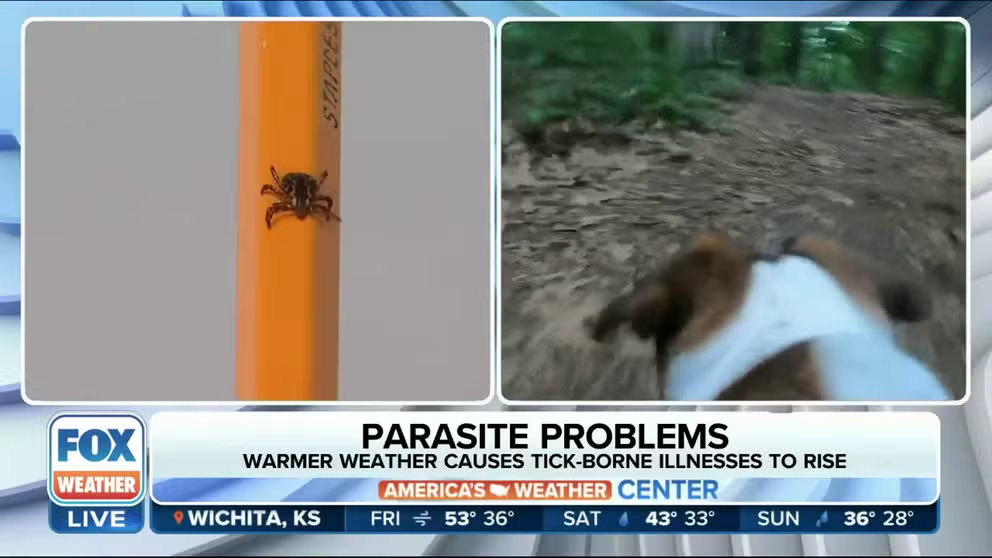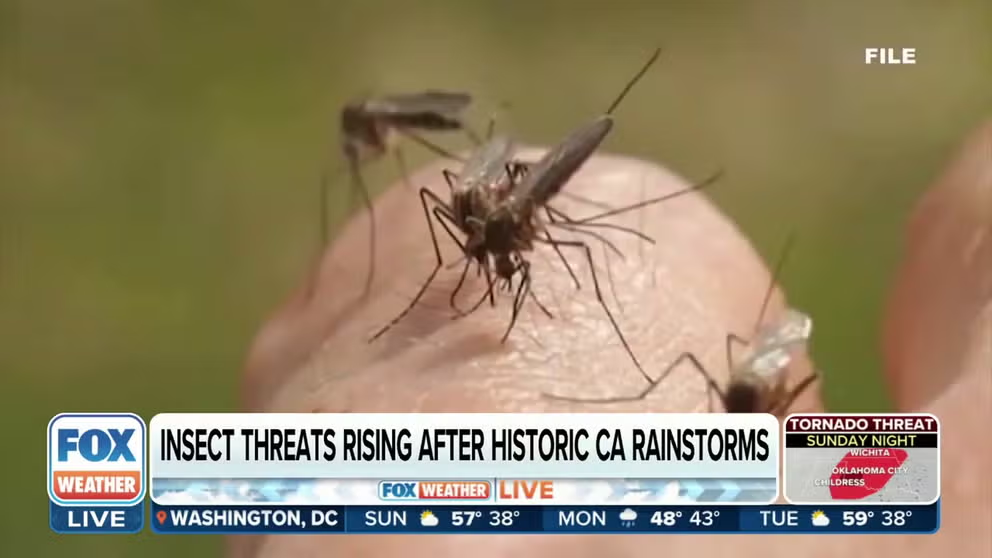Pennsylvania lab sees uptick in ticks as warm fall weather proves prime for parasites
Pennsylvania has experienced a mix of sunny and rainy days in the fall, creating the perfect environment for ticks to thrive. The warmer temperatures increase the risk of Lyme disease as tick season continues.
Warmer weather causes tick-borne illnesses to rise
Fall’s sunny, warm days and intermittent rain have been ideal for the tick population to thrive in Pennsylvania.
KING OF PRUSSIA, Pa. – Summer-like heat has returned to the Northeast in recent weeks, but the enjoyable temperatures could bring a parasite problem.
Pennsylvania has experienced a mix of sunny and rainy days in the fall, creating the perfect environment for ticks to thrive. The warmer temperatures increase the risk of Lyme disease as tick season continues.
Lyme disease is quite prevalent in the state and has one of the highest rates in the U.S. About 30% of blacklegged ticks, also known as deer ticks, in Pennsylvania, carry the disease, as reported by the Allegheny County Health Department. At the Pennsylvania Tick Research Lab, half of the adult ticks carry Lyme disease.
This autumn, temperatures in Northeast cities like Philadelphia have been consistently 3 degrees above average. This weekend, they are expecting an unusually warm spell with temperatures in the 70s. Prime weather for ticks.
In an effort to help, individuals who have been exposed to ticks can mail them to the lab to determine if they are carrying any diseases.
"When we receive your tick here, our technicians … (are) opening up each piece of mail," lab director Nicole Chinnici said. "They're identifying the tick to the species."
THOUSANDS AT RISK OF DEVELOPING DANGEROUS MEAT ALLERGY ASSOCIATED WITH TICKS, CDC WARNS
California seeing more ticks, misquotes and fleas after historic rainstorms
Dr. Andrew Handel of Stony Brook Children’s Hospital joined FOX Weather on Sunday to explain why California is seeing an increase in the insect population and shares warning signs of a possible insect bite.
Over the summer, lab student intern Nick Mazzella said he had a tick on him and was able to bring it to work and get it tested.
"It was all good but good to get the clarity of mind," he said.
Chinnici said the turnaround time is about 30 hours before those who were exposed get a text and email with their results.
"It gives you an idea if the tick that was attached to you was carrying anything, and you can use that with your physician as a diagnostic tool to see (if you) develop any symptoms," she added.
During tick season, lab technicians process thousands of submissions daily, including during the busy fall season.
Changes in tick season
There is now a warning for people to be watchful of ticks throughout the year, as they are present nearly every season, according to researchers at the lab.
"We have seen a shift in a tick season, and we've been seeing an increased number of ticks as well," Chinnici said.
RATS AND MICE MOVE INDOORS FOR FALL AND WINTER: SEE MOST INFESTED CITIES
How to stay safe during tick season
Here are some tips from Dr. Andrew Handel, pediatric infectious disease physician at Stony Brook Children’s Hospital, on how people can prevent and treat tick bites.
The mild temperatures are prompting more people to spend time outdoors, increasing their risk of exposure.
"So anytime it's above 45 degrees, you'll be at risk of a tick bite," Chinnici said.
While they don't die off after the first frost, tick activity slows down once temperatures drop below 35 degrees.
"Every time I do yard work, or I am outside, I do tick checks," Mazzella said.
When protecting yourself from ticks, check common areas like armpits, hairlines, behind the knees and legs and midsection.


